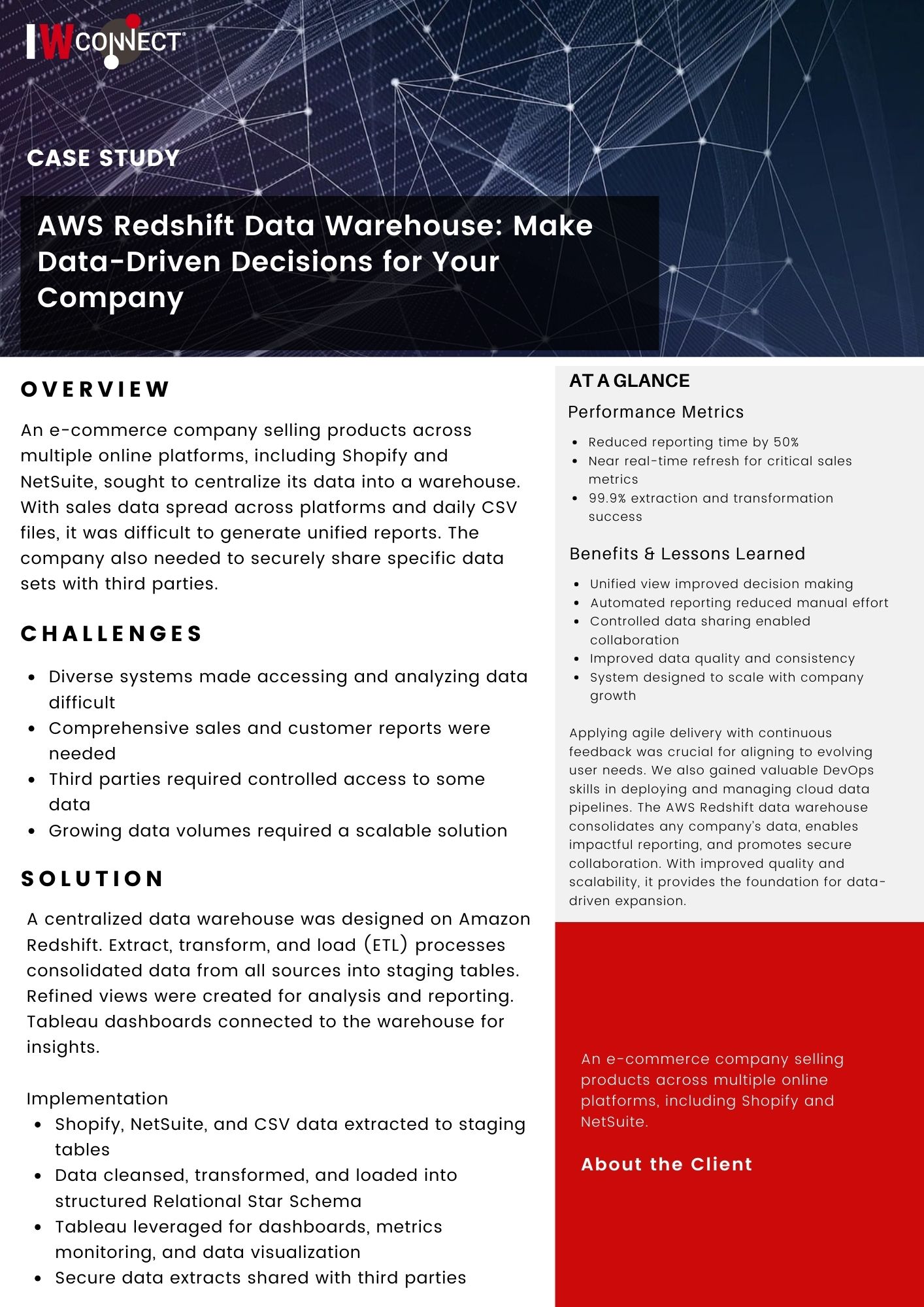Overview
An e-commerce company selling products across multiple online platforms, including Shopify and NetSuite, sought to centralize its data into a warehouse. With sales data spread across platforms and daily CSV files, it was difficult to generate unified reports. The company also needed to securely share specific data sets with third parties.
Challenges
- Diverse systems made accessing and analyzing data difficult
- Comprehensive sales and customer reports were needed
- Third parties required controlled access to some data
- Growing data volumes required a scalable solution
The AWS Redshift Data Warehouse Solution
A centralized data warehouse was designed on Amazon Redshift. Extract, transform, and load (ETL) processes (AWS Glue, AWS Lambda, AWS Step Functions) consolidated data from all sources into staging tables. Refined views were created for analysis and reporting. Tableau dashboards connected to the warehouse for insights.
Implementation
- Shopify, NetSuite, and CSV data extracted to staging tables
- Data cleansed, transformed, and loaded into structured Relational Star Schema
- Tableau leveraged for dashboards, metrics monitoring, and data visualization
- Secure data extracts shared with third parties
Performance Metrics
- Reduced reporting time by 50%
- Near real-time refresh for critical sales metrics
- 99.9% extraction and transformation success
AWS Benefits
- A unified view improves decision-making
- Automated reporting reduces manual effort
- Controlled data sharing enabled collaboration
- Improved data quality and consistency
- System designed to scale with company growth
Lessons Learned
Applying agile delivery with continuous feedback was crucial for aligning to evolving user needs. We also gained valuable DevOps skills in deploying and managing cloud data pipelines. The AWS Redshift data warehouse consolidates any company’s data, enables impactful reporting, and promotes secure collaboration. With improved quality and scalability, it provides the foundation for data-driven expansion.


